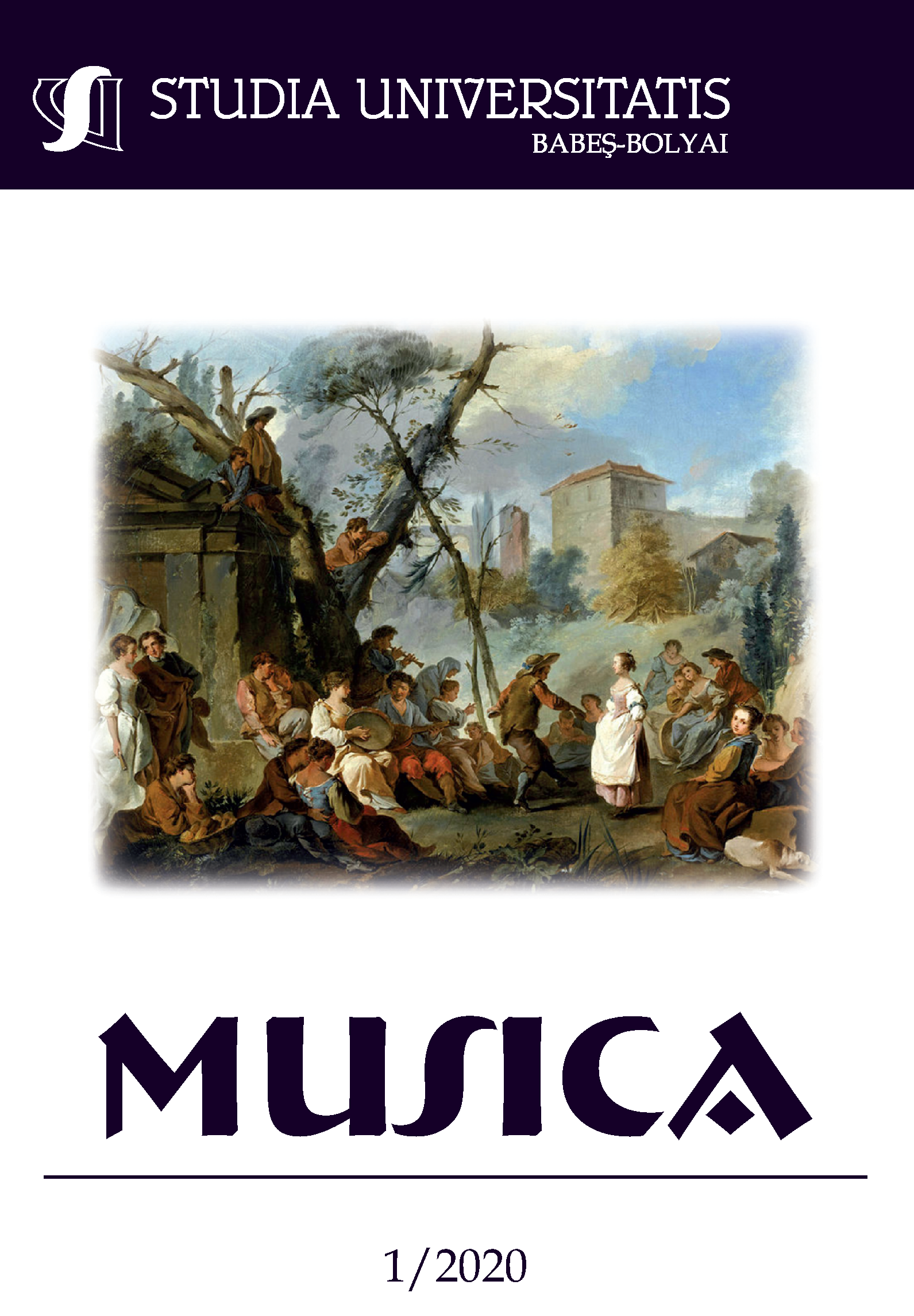COMPARISON OF TWO DIFFERENT WARM-UP TASKS, USING A NEW TOOL ALSO
DOI:
https://doi.org/10.24193/subbmusica.2020.1.02Keywords:
vocalisation, SOVT, nose-pipe, voice range, SNR.Abstract
In our investigation, we compared two different warming-up sections on the singing voice. In the first section, we used traditional tasks which were based on the “linear model” of the phonation, consisted out of “vocalisation” exercises. In the second section we used developed tasks based on the “nonlinear model” – first and second level - of the phonation, using also the experiences of the SOVT (semi-occluded vocal tract) practice. We applied also a new – personally developed - tool – called “nose pipe”- for the warming-up. The sample consisted of 30 persons, who attend since more than one-year classical singing education, 21 of them were females, 9 of them were males. We organised two different sections. The participants came on both of the sections without previous warming-up for the singing voice. First we recorded three vowels – [i, a, u] – for females on G4, for males on G3 - keeping for longer as 2sec, with comfortable volume, then came the 20’-25’ minute long warming-up procedure. After the procedures we repeated the recordings of the same vowels, and also surveyed the VRP (Voice range profile) of the participants on vowel [a]. For both of the warming-up procedures we used the same melodies. For recording we used TASCAM DR-07 MKII equipment. With the help of a stage, the microphones were held before the mouth of every participant, the same – 10cm – distance. For analysing the records, we used SIGVIEW 2.4., to appreciate the values of the parameters we used the SPSS software. We analysed one-second-long part – well balanced in sound level - of the records. The investigated parameters: number from the noise overriding overtones, the volume of f0 and H1→H7, mean of the signal and SNR (signal noise ratio) between 0-9/12 kHz and between 2-4 kHz. During the warm-ups visited voice range and the VRP (Voice Range Profile) surveyed after both of the sections. According to our results both of the warming-up sections are effective. The traditional – vocalisation – has a beneficial effect on volume of f0, on the value of SNR between 0-9/12kHz and on VRP. The second - with nose-pipe - section has beneficial effect on the number of - from the noise enhancing - overtones, on the volume of H1→H7, on the voice range visited during the section, and on the values of SNR between 2-4 kHz. As a conclusion we can enhance that both of the sections are useful, but for other aims. The mixed application of them would be referenced. The second section has also an accentuated beneficial effect on “singer-formant” (=intensification of overtones).
References
Soviärvi A. (SOVT): A Magyar Fonetikai, Foniátriai és Logopédiai Társaság kongresszusra; referátumok. 1983. június 28--29--30. Debrecen, (1983).
Adorján I.: Hangképzés, énektanítás. Eötvös József Könyvkiadó, Budapest (1995)
Sundberg, 2007; J. Sundberg, J. Bauer-Huppmann: When Does a Sung Tone Start? Journal of Voice 21, no. 3 (2007): 285–293.
Hirschberg J., Hacki T., Mészáros K.: Foniátria és Társtudományok. ELTE Eötvös Kiadó, Budapest (2013).
Antonetti E. da S., Ribeiro V.V., Moreira P.A.M., Alcione Ghedini Brasolotto A.G., Silverio K.C.A.: Voiced High-frequency Oscillation and LaxVox: Analysis of Their Immediate Effects in Subjects with Healthy Voice Angélica. Journal of Voice 32 (2018).
Aura M., Geneid A., Bjørkøy K., Rantanen M., Laukkanen A-M. (2018): The Nasal Musculature as a Control Panel for Singing—Why Classical Singers Use a Special Facial Expression? Journal of Voice 32 (2018).
Gill B.P., Lee J., M.B. La F., Sundberg J.: Spectrum Effects of a Velopharyngeal Opening in Singing. Journal of Voice 32 (2018).
Guzman M., Acuña G., Pacheco F., Peralta F., Romero C., Vergara C., Quezada C.: The Impact of Double Source of Vibration Semioccluded Voice Exercises on Objective and Subjective Outcomes in Subjects with Voice Complaints. Journal of Voice 32, no.6 (2018): 770.e1-770.e9.
Kang I., Xue C., Piotrowski D., Gong T., Zhang Y., Jiang J.J.: Lingering Effects of Straw Phonation Exercises on Aerodynamic, Electroglottographic, and Acoustic Parameters. Journal of Voice 32 (2018).
Kang J., Xue C., Chou A., Scholp A., Gong T., Zhang Y., Chen Z., Jiang J.J.: Comparing the Exposure-Response Relationships of Physiological and Traditional Vocal Warm-Ups on Aerodynamic and Acoustic Parameters in Untrained Singers. Journal of Voice 32 (2018).
Mendes A.L.F., Carmo R.D., Arauja A.M.D.G., Paranhos L.R., Mota C.S.O., Dias S.Sch.V., Reis F.P., Aragao J.A.: The Effects of Phonation into Glass, Plastic, and Lax Voix Tubes in Singers: A Systematic Review. Journal of Voice 33, no.3 (2019): 381.e1-381.e9
Mills R.D., Rivedal Sh., DeMorett C., Maples G., Jiang J.J.: Effects of Straw Phonation Through Tubes of Varied Lengths on Sustained Vowels in Normal-Voiced Participants. Journal of Voice 32, no.3 (2018): 386.e21- 386.e29.
Wistbacka G., Andrade P.A., Simberg S., Hammarbery B., Söndersten M., Svec J.G., Granvist S.: Resonance Tube Phonation in Water – The Effect of Tube Diameter and Water Depth on Back Pressure and Bubble Characteristic at Different Airflows. Journal of Voice 32, no.1 (2018): 126.e.11-126.e.22.
Downloads
Published
How to Cite
Issue
Section
License
Copyright (c) 2020 Studia Universitatis Babeș-Bolyai Musica

This work is licensed under a Creative Commons Attribution-NonCommercial-NoDerivatives 4.0 International License.






